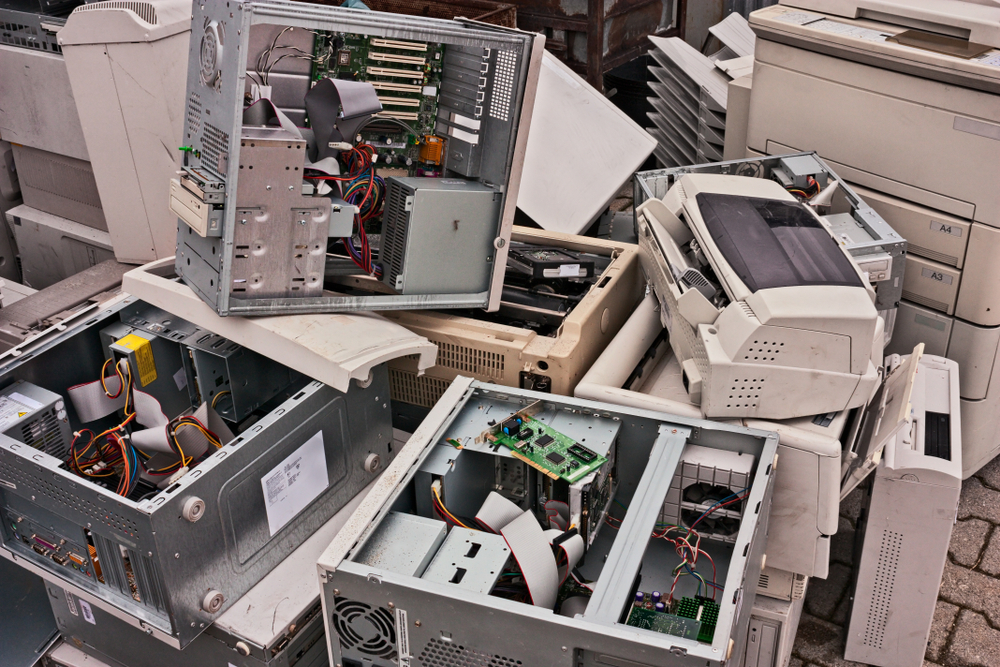Electronic waste, or e-waste, is a growing global problem with serious implications for human health and the environment. As the world becomes increasingly reliant on technology, the amount of e-waste generated each year continues to rise, with much of it ending up in developing countries where recycling practices are often unsafe and unregulated. One of the key reasons why is recycling e waste so difficult lies in the complexity of the materials involved, the lack of proper recycling infrastructure, and the hazardous nature of the components found in these devices.
In this article, we’ll explore the health and safety issues associated with e-waste and what can be done to mitigate these risks. We’ll cover topics such as:
- The toxic components found in e-waste and how they can harm human health
- The environmental impact of improper e-waste disposal and recycling
- The health risks faced by workers in the informal e-waste recycling sector
- Strategies for safer e-waste management and recycling
- The role of policymakers, manufacturers, and consumers in addressing the e-waste crisis
Understanding E-Waste
E-waste refers to any discarded electronic device, including computers, smartphones, televisions, refrigerators, and more. As technology advances, these devices become obsolete more quickly, leading to a growing mountain of e-waste that needs to be disposed of or recycled.
According to the Global E-waste Monitor 2020, the world generated 53.6 million metric tons of e-waste in 2019, and this figure is expected to reach 74.7 million metric tons by 2030. Much of this e-waste is exported from developed countries to developing nations, where it is often recycled using unsafe methods that put workers and communities at risk.
Toxic Components of E-Waste
E-waste contains a variety of toxic substances, including:
- Heavy metals such as lead, mercury, cadmium, and beryllium
- Persistent organic pollutants (POPs) like polychlorinated biphenyls (PCBs)
- Brominated flame retardants (BFRs)
- Phthalates
- Polycyclic aromatic hydrocarbons (PAHs)
These substances can have serious health effects, including:
- Neurological damage
- Kidney and liver damage
- Respiratory problems
- Cancer
- Reproductive and developmental issues
Exposure to these toxins can occur through inhalation, ingestion, or dermal absorption, and can be especially harmful to vulnerable populations like children and pregnant women.
Health Risks for E-Waste Workers
Workers in the informal e-waste recycling sector face the highest risk of exposure to toxic substances. Common recycling practices like open burning, manual dismantling, and acid leaching release harmful dusts and fumes into the air, which workers can inhale.
A systematic review of studies on the health risks associated with informal e-waste recycling in Africa found an association between these practices and:
- Musculoskeletal disease symptoms and physical injuries like back pain, lacerations, eye problems, and skin burns
- Noise-induced hearing loss
- Reduced lung function and increased risk of liver damage
- DNA damage
To protect workers, employers must provide personal protective equipment (PPE), implement engineering controls to reduce dust exposure, and ensure proper training on safe handling procedures.
Environmental Impact of E-Waste
Improper disposal and recycling of e-waste can have severe consequences for the environment. Heavy metals and other toxins can leach into soil and groundwater, contaminating water supplies and harming local ecosystems.
A case study from Hebron, Palestine, found that heavy metal concentrations in water resources near e-waste recycling sites were significantly higher than in control areas. The study also detected elevated levels of heavy metals in soil and air samples.
These pollutants can persist in the environment for years, accumulating in the food chain and posing long-term risks to human health and wildlife. Addressing the environmental impact of e-waste requires a comprehensive approach to safer recycling and disposal practices.
Strategies for Safer E-Waste Management
To mitigate the health and environmental risks of e-waste, a multi-stakeholder approach is needed. This includes:
Policymakers:
- Enacting and enforcing regulations on e-waste imports, exports, and recycling practices
- Providing incentives for the development of formal, regulated e-waste recycling industries
- Investing in infrastructure for safe e-waste collection, storage, and processing
Manufacturers:
- Designing products with longer lifespans and easier disassembly for recycling
- Phasing out the use of toxic substances in electronic devices
- Offering take-back programs for end-of-life products
Recyclers:
- Adopting best practices for e-waste dismantling and recycling, such as manual disassembly and mechanical processing
- Implementing engineering controls to reduce dust and fume exposure
- Providing PPE and training for workers on safe handling procedures
Consumers:
- Extending the lifespan of electronic devices by repairing and upgrading them when possible
- Responsibly disposing of e-waste through take-back programs or authorized recyclers
- Supporting manufacturers and retailers that prioritize sustainability and worker safety
By working together, these stakeholders can help create a safer, more sustainable e-waste management system that protects human health and the environment.
Conclusion
The health and environmental risks of e-waste are clear and present dangers that require immediate action. As the volume of e-waste continues to grow, it is crucial that we implement safer recycling practices, phase out the use of toxic substances in electronics, and invest in the development of a formal e-waste recycling industry.
Policymakers, manufacturers, recyclers, and consumers all have a role to play in addressing this global crisis. By working together and prioritizing the health and safety of workers and communities, we can create a more sustainable future for our planet and its people.

